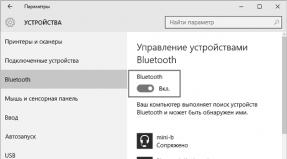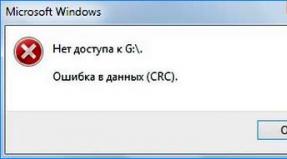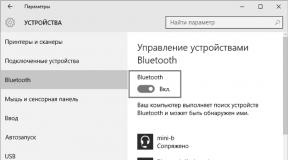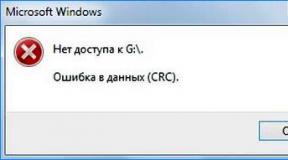Split screen into 3 parts. Divide your desktop into zones. Split screen. Video tutorial on setup
This article describes the steps by which you can snap windows to different sides of the screen using the Snap Assist function in the Windows 10 operating system.
Microsoft has expanded the ability to snap open windows into a new feature called "Snap Assist"
CONTENT:1
What is Snap Assist (snapping windows)
The Snap feature, introduced in Windows 7, allows users to snap applications or windows to the sides and corners of the screen. This makes it easier to work with multiple windows open simultaneously on the desktop. With Snap Assist, screen space can be used more efficiently. For example, the function allows you to split the monitor between two application windows vertically. You can also divide the screen into conventional “quarters” and attach an application to each corner. At the same time, the user has access to more information, which significantly increases work efficiency.

Universal apps in Windows 10 run in desktop windows. On touch devices, the pinning feature is optimized for touch interfaces. In the desktop version, the same functionality is implemented through Snap to maintain uniformity in the interfaces.
How to use Snap Assist (snapping windows)
To dock a window, click on the title bar with the left mouse button and hold the button down while dragging the window. You need to drag the application window to the right or left side of the monitor. When the window enters the docking area, a translucent frame will appear showing exactly where the app will dock when the key is released. If the position of the window suits you, release the mouse - the window will be attached to the specified area.
The guide frame appears some time after you click and drag the window. There is no need to wait for it to appear. You can save a few seconds by quickly dragging the window to the left or right side of the monitor. The window will also dock, resizing to take up exactly half the screen area. This part of the functionality works identically to how it happened in earlier versions of Windows

When you snap windows by dragging them, a new Windows 10 feature called Snap Assist is launched. The user is shown a panel where all windows currently open are presented. You can click on any of them, and the selected application will automatically go to the second - still free - part of the screen. This approach is much more rational and understandable than the implementation from previous versions of the operating system (each of the windows had to be attached “manually”, repeating the manipulations of selecting an application and dragging it to the desired part of the screen). Due to the ability to “add-select” a program, several precious seconds of user time are saved.

You can also attach windows using hotkeys. To do this, use a combination (logo key) and an arrow (right or left, depending on which part of the screen you want to send the application to). However, you won’t be able to use the Snap Assist functionality with this attachment - it is only available when you fix windows by dragging.
Another difference for the better is that “universal” applications can be attached in the same way as “classic” ones. In Windows 10, they work in “system” windows, which follow general rules.

Fixing (attaching) windows vertically
Windows can be attached not only to the right or left - the vertical split screen function is available. In this case, one of the applications will be located in the upper half of the monitor, the other will be attached to the bottom. You can attach using hotkeys; to do this, press the key and the arrow - up or down, respectively. Pressing the key and arrow again will perform a different action. When you select the up arrow, the active window will occupy the entire screen; when you click on the down arrow, the selected application will be minimized on the taskbar.

You cannot achieve the same result by dragging; vertical attachment can only be done using hotkeys. If you try to drag a window to the top of the monitor, the application will expand to full screen. Dragging to the bottom border will not make any changes to the window.
It is worth remembering that the position of the window and its “functionality” depend not only on the quality of the function’s implementation in Windows, but also on the application itself. Thus, some “universal” programs are not very adapted for such use. When attached vertically or “in quarters,” such applications may not work entirely correctly.
Attaching windows to quarter screens
Thanks to changes in the Snap function, working with large monitors has become even more convenient. Now you can place up to 4 applications on one screen, placing them in a 2x2 pattern, with a window at each corner of the monitor. Similar solutions have already been proposed by various managers for “mosaic” placement of applications, but Microsoft has made this functionality standard and integrated into the operating system out of the box.
To pin an application to a corner of the screen, simply drag the window to the corner (and not to the side, as with horizontal pinning). To fix each new window, dragging will have to be done again; the “assistant” does not work here.

But hotkeys can help again. To dock a window, simply press the +Horizontal Arrow key and then the +Vertical Arrow key (for example, +Left Arrow and +Up Arrow will dock the window in the upper left quarter of the monitor).
You don't have to fill your entire monitor with apps. For example, you can keep one or two applications at a minimum size on the left, and fill the right side with a single window that will take up all the allocated space.

How to disable Snap Assist (snapping windows)
You can also disable Snap Assist in the Windows 10 settings; to do this, open:
Start ➯ Settings ➯ System ➯ Multitasking
On the right side of the window, disable the option When docking a window, show what can be docked next to it. This will disable Snap Assist and the changes will take effect immediately.

Once you disable Snap Assist, try snapping an app or window to one of the sides or corners of your desktop. You'll find that the app docks normally, but the rest of your desktop space remains as it was, without showing the apps recommended by Shap Assist.
Do you like to combine two types of phone work? Want to chat with your best friend and watch videos at the same time? Previously, such actions were impossible, but with the release of the Android 7.0 operating system, a multi-screen mode appeared, significantly saving your time. Unfortunately, not everyone knows how to split the screen into 2 parts in Android, what it does, and what methods exist.
What is multi-screen mode and why is it needed?
Split Screen is an excellent multi-window feature that first saw the light of day thanks to Android N. This option literally splits the phone screen into two windows, and allows you to work with them completely separately.
Multi-screen is most relevant for people with a busy schedule, when they want to watch a movie and need to correspond with their boss. After all, constantly switching between two applications is inconvenient and time-consuming, and if they are on the same screen, there are no problems.
Alas, Not all applications support dual screen. For example, you can’t do this with a built-in camera, just like a phone book. If there is no multi-window function, you will receive a corresponding notification from a specific application.
An example of separation on Android 7 and 8
Now let's look at what splitting the screen into parts looks like. From the screenshots you can see that got two equal tabs.
Unfortunately, all the information stored on the page does not fit in them. But if you pull the distribution line up or down, you can enlarge one window and reduce the second.
There are several videos on the app's description page to help you understand the interface, although it is already intuitive.
But, unfortunately, there are disadvantages, namely: The tool does not support the separation of absolutely all programs and games. Generally stands out about 40-60 applications, which can be reduced in multi-window. Among them are the most popular and in demand:
In fact, everything is the same here, although many users believe that multi-windows are created differently on tablets. This is not true: having any Android device, you can use one of the above methods, and get a perfectly functioning multi-window.
The only difference is These are larger windows based on the dimensions of the display. Of course, we see only advantages here. Tabs will not shrink much if the screen diagonal is from 7 inches, and you can easily read all the information without unnecessary scrolling.
Video instruction
Answers to popular questions
How to exit multitasking mode?
There are three ways to do this. First: perform a long tap on the on-screen button responsible for the tabs. Open windows should be reset. Second option: draw the separation line up or down to the maximum. In this way, one application will open on the screen, and the second will be minimized. And the third, most convenient: just click “Clear all” and the tabs are closed.
Is it possible to switch between open tabs?
Yes, swipe the on-screen button twice. But this function is not present on all smartphones, although it is very convenient.
I can’t split screen, what should I do?
Most likely, your operating system, shell or model does not support Split Screen. There is only one way out - to resort to the help of special applications.
As you can see, dividing the screen into two parts in Android is quite simple. You just need to follow our instructions and everything will work out!
Microsoft is constantly working to expand the capabilities of its main operating system Windows 10, and in the latest editions the function of dividing and pinning active windows (or simply open ones) on one screen has been improved using the standard Snap Assist tool.
What is Snap Assist tool?

The Snap feature has its roots in Windows 7. It allowed the user to distribute windows of running programs across the entire screen and pin them there so that they were equivalent. When there is a need to work simultaneously with many windows, but there is only one monitor, this greatly helps to use the desktop space much more rationally. You can divide the monitor into two windows vertically, or you can separate each window into the corners of the window, and the table will be divided into quarters, in each corner a separate, specifically attached application will work (actively). The user receives information from several programs at once, optimizing and making their work more efficient.
Snap Assist: how to use

In fact, the procedure is quite simple. You have a window of a running program, to pin this window to a certain place, left-click on the title, and without releasing, drag the window to the side, left or right, straight to the end of the monitor. You will see a translucent frame, which will mean that the window is already in the fixation zone. The frame tells you how the window (already docked) will be positioned after you release the mouse button. Are you satisfied with the situation? We release the key, and the window will automatically stand firmly in this zone.

By the way, the guide translucent frame instantly appears as soon as you start to pull the window, but this is not necessary, or rather, you can drag it without waiting for it to appear. You simply drag the window to the desired part of the monitor and save a couple of seconds. The window is mounted in such a way that half of the available screen space is occupied. This part of the function also works on earlier versions of the OS, but in the new version the capabilities are expanded.
Snap extension in the top ten

In Windows 10, dragging windows has slightly expanded functionality. As soon as dragging begins, a diagram is shown with all open windows. By clicking on any one, the user automatically sends it to a free cell or part of the screen. This is much more convenient than manually pulling windows and installing them in the right place
Hotkeys

In Windows, of course, you can do a lot with the keyboard, including splitting the screen and docking program windows. For example, you need to send it to the right side of the screen, press Win simultaneously with the right arrow. True, Assist will not appear to you in this case; the diagram appears only when dragging. Each window follows the general rules of system windows.
Vertical fixation

Windows can be fixed not only on the sides, but also at the top and bottom. One program will occupy the top half of the screen, the other will occupy the bottom. This can be done with hot keys, only the arrow is not left/right, but up/down. Pressing the arrows again will minimize one of the programs to the tray. This type of fastening does not work by dragging. It is worth remembering that not all programs have sufficient flexibility and adaptability; the windows of some programs may behave or display incorrectly
Screen quarters
Snap allows large monitors to become much more convenient and informative. If previously a 17-inch monitor was almost the ultimate dream, now there are 40-inch panels, and they are relatively inexpensive. And there are also many high-performance TVs that also have large diagonals. Such a monitor can be divided not into two windows, but into four, without deteriorating usability. Of course, there were third-party applications that provided such tools, but the built-in standard function is always better and more reliable.
Connecting two monitors to a computer or laptop may be necessary for a variety of reasons. As a rule, this is done for professional purposes - for the convenience of video editing, photo processing or working with texts. However, this can also be useful for the average user - you can play on one monitor and use an Internet browser on the second.
Even the most inexperienced user can make the connection - you just need to select the right equipment, and the operating system itself will be able to detect and configure the second monitor. The problem can only arise if, when connecting a monitor to a laptop, the standard display turns off, or the same image appears on both screens. How to display different images on monitors?
Steps to connect a second monitor
The entire connection procedure can be divided into two main parts: hardware and software. At the first stage, the user needs to find out what kind of video card is installed in his computer and what connection interfaces it has. Depending on the computer, there may be one or more connectors; they can be of different types - in this case you will need an adapter or different monitors.
The software part is usually executed automatically. After connecting the second monitor to a free connector on the video card, any modern operating system will independently start the process of detecting new equipment and transfer the video stream to it. If this does not happen, the user can start the discovery manually.
So, first of all, you need to inspect the video card installed in the computer. Each of the connected monitors will need its own connector; Typically, at least two outputs can be found on a discrete map. If there is no second connector, the problem can be solved in different ways:
- purchasing a new graphics card with several interfaces can be very expensive, but in addition the computer will receive more resources for video processing;
- install a second cheaper video card, if the design of the motherboard and computer case allows it - there must be a free slot and enough space;
- Using a video signal splitter is a budget option, which can, however, somewhat spoil the image quality if the old analog interface is split.
If you plan to connect a second screen to a laptop, there are practically no options - replacing a video card will easily cost half the cost of a computer, and installing a second board is most often impossible. In this case, it is best to immediately select a laptop with an additional video interface, preferably digital.
Variety of interfaces
To connect a monitor to a computer without problems, the connectors on them must be of the same type; Sometimes you can use an adapter, but a loss of quality is inevitable. The choice of interface can be made from the following list:
- VGA (D-Sub) is an old analog interface designed to transmit images in low resolution and low quality;
- DVI -I and DVI -D - low-level digital interface, very common - found on most monitors and video cards;
- HDMI is a universal interface (it can transmit not only pictures, but also sound), found not only on computers and monitors, but also on TVs and game consoles;
- DisplayPort is a modern option for connecting monitors with 4k resolution;
- Thunderbolt is the fastest interface to which you can connect a large number of monitors without losing image quality.
It is impossible to connect something incorrectly - all connectors and plugs have a completely different design. Adapters can only be used when connecting connectors of the same type (for example, analog VGA and DVI-I, which transmits an analog signal along with a digital one). To connect an analog interface to a digital one, you need a special device - a DAC.
The easiest way to output a signal from a laptop to a monitor is to select only one monitor that matches the additional video interface. The signal will be separated in exactly the same way as in the case of a regular desktop computer. It will also be possible to display different images on separate and built-in screens.
Setting up a second monitor
In most cases, the system itself will detect new equipment and display an image on it. As a rule, when connected to a laptop, the same image begins to be displayed on both screens, and when connecting a second monitor to a desktop PC, the desktop lengthens. However, sometimes this may not happen. Before adjusting the output of different images, you should understand this problem.
Enabling a second monitor in any version of Windows is done through the control panel, in the screen settings menu. There are three parameters available for adjustment:
- image output mode – on one or both screens, mirrored, desktop stretching;
- screen resolution;
- orientation – horizontal or vertical.
After this, both monitors will have a common desktop. This already allows you to have a different image on different screens - for this, of course, you will have to run applications in windowed mode and place them in a certain area of the desktop.
Creating two independent desktops
If you need to have two separate desktops, simply connecting monitors to a common video card will not be enough. You can do this in several ways:
- connect the equipment to a modern card with several graphics processors and select the appropriate mode in the settings;
- connect each monitor to a separate video card;
- use special equipment that connects to one video card and separates the video signal.
In the latter case, you can even connect two monitors to a laptop - in this case, there will be one large desktop on them, and a second on the built-in display.
Thus, even an inexperienced user can figure out connecting and setting up a second monitor.
Video tutorial on setup
In contact with
26.03.2019
We continue to gradually reveal the “secrets” of Windows 10 Technical Preview. Another innovation that appeared in this operating system is an improved window management mechanism.
The Snap feature first appeared in Windows 7 as part of the Aero interface. Translated, Snap means “snap,” and the function is intended to organize open windows by snapping them to a specific area of the screen. In Windows 7, it allows you to split the screen equally between two open windows, and in Windows 8, it can be used to place desktop and modern applications (applications from the Windows Store) on the screen at the same time.
Select a program from the list and, as it floats on the screen, specify an angle for its position. Tap the separator between apps and drag it to the right or left. Release when you find the size you want. Therefore, some of these applications may not be available. To view a full-screen app again, simply tap the divider and drag it to a corner, causing the app you want to fill the entire screen.
The other application will not be closed. If you want to use it, just drag your finger along the left edge of the screen or tap the apps button on the taskbar. With your mouse, you can do the same thing by clicking on the top of the screen and dragging the app to one side of the screen. The screen will be split in half, and one half will have a solid unused color. Now just open the app you want it to take the other half. You can also do this by dragging an application that is already open with the mouse.
In Windows 10, the window management feature has received a new name and acquired additional capabilities. So if you drag the active window to the edge of the desktop, it will be expanded to one half of the screen, and thumbnails of the remaining windows currently open will be displayed on the second. You can scroll through them and select the application that will be expanded to the rest of the screen.
To view running applications, hover your mouse over the bottom left corner of the screen and move the cursor up. Once this is done, click and drag the app you want to one side of the screen. Depending on the size and resolution of your monitor, you may want to add a third column. To do this, open the list of running applications again and click on one of the applications. Please note that it will float on the screen.
Click and drag to one side or to the center of the screen. This will create another space. When this happens, open the application. If the third column does not appear, your monitor resolution is not sufficient for this process. If your monitor supports even higher resolutions, you can reduce the size of apps and add a fourth column. To do this, on the Start screen, find “resolution” and open “Change screen resolution.”
And if you pull the window into a corner, it will collapse into a quarter of the screen, and in the free space you can open another window from the remaining ones.
In total, you can place up to four windows on your desktop at the same time.

To use four apps side by side, simply browse the list of running apps and drag them between existing apps. You can also resize each app and give more attention to the app that requires more space. To do this, simply tap the black bar that divides the screen and drag it to the side. If you want to display an app out of view, drag the panel to the edge of the screen.
This way you can work with multiple applications at the same time. There's no doubt that we'd all like to have more and more pixels on the screen, or more windows to open at once, or more picture definitions in movies. While many achieve this using the most obvious approach of purchasing a larger monitor, others prefer a different and even more cost-effective approach: using two monitors simultaneously.
A special feature of Snap Assist is that when positioning windows by dragging with the mouse, not all window sizes are available. Simply put, this way you can divide the screen into only 2 or 4 equal parts. However, you can manage windows either by dragging or using the keyboard using keyboard shortcuts Win + arrows (⇐⇑⇓⇒). The keys can be combined sequentially, for example like this:
The new panel can also be customized as desired, even if you can place it in a different position from the main taskbar. The option to hide the panel automatically is also available. This second program is especially useful for those who care about the aesthetics of their desktop.
An interesting detail is that the app has no restrictions on image resolution, ensuring that you can have photos that fit perfectly on each of your monitors. This program has come precisely to appreciate the pixels that you have at your disposal even more. With it, you can divide the available space on your monitors into multiple precisely sized areas, allowing you to resize each open window to occupy a specific amount of space in stages.
Open the window and click Win + left arrow

Then Win + up arrow

Now Win + Right Arrow

The program also allows you to assign keyboard shortcuts to customize the size and position of each window. If you've been using multiple monitors for some time, you may have realized that moving the pointer from one end to the other between the two screens gives you a bit of work, requiring you to hover your mouse to compensate for its limited range.
The work of opening, shrinking, moving, resizing and many other actions that are done to position application screens in a satisfactory manner is tiring for users. But don't think that this support only happens for program screens. Program settings icons will appear on the top line of each of them.
Two more times Win + right

AND Win + down arrow. And if you press again Win + down
then the current window will be minimized.

As you can see, you can get more window sizes using the keyboard than you can by dragging with the mouse. This allows you to place windows of different sizes on your desktop and arrange them in any order, for example like this.
Refers to the program's extension options, that is, by clicking on this icon you can find resources to position the window in the location you prefer, or leave it transparent and thus be able to visualize the contents below it. This option is called "Always Top", which means that by turning it on, the window will always be in one of the top sections, which will improve the visualization. Option to enable or disable window size. . You can select one of the screen customization options.
The program has five options, the first of which leaves the screen at one size, the second to split the screen in half, and the other to split the screen into three areas. The fourth option is similar to the previous one, but two windows are located on the left side. The last one, the most complete, will divide your desktop screen into four equally sized areas.

On the one hand, keyboard control allows you to more flexibly control the size and location of windows. On the other hand, the result is not always what you expect. It’s useless to describe it, it’s better to try it yourself. I must say, it’s quite a fun activity, I was stuck for half an hour :)
This way, programs you use on most or web pages you can access can be opened side by side at the same time. Your workflow becomes simpler and more flexible because you can see everything at once.
To access the Options and Options panel in the window departments, right-click the program icon in your computer's system tray. Place your mouse in the "Grid Configuration" option and then in the "Screen" option. You'll soon notice five options available in the program.
Desktop division. After selecting one of the configuration options, you can begin positioning windows in sessions. To do this, minimize the screens of programs, browsers or folders. Now drag it to the desired area. Note that when you start dragging windows, a red box appears, making the process easier to understand and more intuitive.
And one more thing related to Modern applications. Windows 10 introduced a windowed mode for modern applications and now they can open on the desktop like regular desktop applications. But Snap Assist cannot fully manage the windows in which these applications are open; it can only expand the window to half the screen, or reduce it slightly.
Click here and learn how to create a restore point. Organizing your desktop and all your application windows will definitely make your work day more meaningful. The program does work, but sometimes you may find it difficult to place the windows in the places you want. With this feature, there is no inclusion error in sessions. All this with one click.
And you can still customize how you want the program to work. The program actually simulates as if you had two monitors instead of one. He also gives instructions on how to use it. When you click this arrow, you will automatically switch to another screen.

In general, Snap Assist, especially in combination with Task View, is, although unfinished, quite a powerful tool for managing the user environment. However, Windows 10 Technical Preview is a preliminary version of the operating system, so problems are inevitable. Everything may change in the final version of the system, and I hope for the better.
If you click again you will go back to the first one. What changes is that programs open on one of the screens will remain there. That is, you can have multiple applications on the taskbar. When you change screen, you will see a blank taskbar. If you open the program, it will appear on this second screen, but not on the first screen. This is similar to independent workspaces.
If you drag a window to the border, it will be as if there were two monitors. The window will also appear on the other side in half. This way, you can transfer program windows to another screen by simply dragging them to the side. Options is where you configure some things from your “second screen.” In "Enable Hotkey" you define a keyboard shortcut that will be universal.
Today we will give instructions for those who want to split the computer monitor screen into two so that they can view two applications side by side. We'll also talk about how you can split your screen between two monitors and split your wallpaper so you can have a different wallpaper on each monitor.
Suppose you ordered the installation of CCTV cameras and there was a need to display more information on your desktop. The first of our tips is really only useful if you have a widescreen computer display. Otherwise, dividing a normal monitor will not give you enough space for two windows or applications. However, if you have a 15″, 17″ or larger display, you can easily split one monitor. And the best thing about splitting windows on one monitor is that you don't need any apps, you can do it for free using the built-in Windows options. In this article we will show how to do this in Windows XP and Windows 7 and the latest version of Windows 8.
That is, when you press the selected key combination, your desktop will change. In the "Primary Desktop" and "Extended Desktop" you customize the icons and background of the main screen and the second screen, respectively. You can check "Hide all desktop icons" to make the icons appear when you are on a different desktop. You can also choose a different wallpaper for another screen in Wallpaper.
Dual Desktop is great for those who need space and improved desktop organization but don't have two monitors. Using the program is as practical as possible as you just need to click to go to another screen.
How to split screen in Windows XP
In order to split your display in the middle horizontally or vertically, first of all, you need to open two applications, say Word and Excel. Now click on one of the tabs in the Windows taskbar and then press and hold the CTRL key on your keyboard. While holding down the CTRL key, click on the taskbar to another tab. They should now both be selected (they should have a darker background than the other tabs).
Split screen, also called multi-screen, is a technique often used in video editing to display two or more videos simultaneously on the same screen. Using this feature, you can create fantastic effects, such as putting you and cloning yourself while talking to each other.
Go to the Split Screen tab on Filmore to access the layout library. Select the layout that suits you best and drag it onto the video track on the timeline as shown below. Drag each of your original video clips to the area where you want to delete them. Note. You can select a margin option and select a specific color if you want to add a margin border to each clip. You can also press the speaker button to mute the video. By dragging the slider, you can also adjust the start time of each clip.
Now that both applications are selected in the taskbar, right-click on either of them and select Tile Vertically from the options context menu. You should now have Word on one side of the screen and Excel on the other side! If you want to place them in landscape rather than portrait, simply select the Tile Horizontally option.
You can also split your screen between three or more apps by simply selecting more apps from the taskbar! Quite simple! This is how you can split the screen if you have one monitor. If you have more than one monitor, you won't be able to split the screen between program windows on the second monitor using the Windows XP or Windows 7 utilities. Both operating systems support multiple monitors, but they simply extend the current desktop onto multiple additional monitors.
The default split screen duration is 5 seconds, you can drag the screen marker forward or backward to adjust the duration. You can customize the duration in all split screen styles except the 3 scan screen.

But you can hover your mouse over the split screen and once the mouse cursor changes shape, you can start dragging the screen to the desired size. The company is big on new products with this version, which will be the last. Christmas on the cake: Version 7 and 8 users can go for free version 10. Virtual desktop allows you to simulate multiple screens.
This means you'll only have one taskbar, and you can drag apps to other monitors, but not split them using the method described above. In Windows 8.1, each monitor can have its own desktop, and you can share multiple programs across multiple monitors.
How to Split Screen Windows 7/Windows 8
In Windows 7 and Windows 8, you no longer need to follow the Windows XP procedure for distributing windows because there is a new feature called Snap for this. Using Snap, you can simply drag windows around the screen and they will “take” the desired place. Drag the window to the far left or to the right and you'll suddenly see a translucent frame appear on the screen.
As you can see, the window will take up half the screen on the left side because you dragged the window to the left side of the screen. Now all you have to do is take another window and drag it to the far right and it will automatically fill the right half of the screen. Here's how easy it is to split your screen in Windows 7/Windows 8!
If you are working on Windows 7 with multiple monitors, you can use this drag-and-drop technique to split the screen on additional monitors as well. In Windows 8, you can do the same thing, plus there is a separate taskbar for each monitor.


















